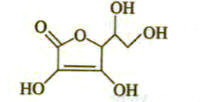Mg liberates H2 on reaction with
dil. HCl
dil. H2SO4
very dil. HNO3
All of these
The correct Answer is:D
To solve the question regarding which substances magnesium (Mg) liberates hydrogen gas (H₂) when it reacts with them, we will analyze the reactions of magnesium with the given acids: dilute hydrochloric acid (HCl), dilute sulfuric acid (H₂SO₄), and dilute nitric acid (HNO₃).
1. Identify the Reactants: We need to consider the reactions of magnesium with the following acids:
- Dilute Hydrochloric Acid (HCl)
- Dilute Sulfuric Acid (H₂SO₄)
- Dilute Nitric Acid (HNO₃)
2. Reaction with Dilute Hydrochloric Acid (HCl):
- The reaction can be written as:
Mg+2HCl→MgCl2+H2
- Here, magnesium reacts with hydrochloric acid to produce magnesium chloride and hydrogen gas.
3. Reaction with Dilute Sulfuric Acid (H₂SO₄):
- The reaction can be written as:
Mg+H2SO4→MgSO4+H2
- In this case, magnesium reacts with sulfuric acid to yield magnesium sulfate and hydrogen gas.
4. Reaction with Dilute Nitric Acid (HNO₃):
- The reaction can be written as:
Mg+2HNO3→Mg(NO3)2+H2
- Here, magnesium reacts with nitric acid to form magnesium nitrate and hydrogen gas.
5. Conclusion: From the above reactions, we can see that magnesium liberates hydrogen gas when it reacts with all three acids: dilute HCl, dilute H₂SO₄, and dilute HNO₃. Therefore, the correct answer is:
- Option D: All of these
- Dilute Hydrochloric Acid (HCl)
- Dilute Sulfuric Acid (H₂SO₄)
- Dilute Nitric Acid (HNO₃)
- The reaction can be written as:
Mg+2HCl→MgCl2+H2
- Here, magnesium reacts with hydrochloric acid to produce magnesium chloride and hydrogen gas.
- The reaction can be written as:
Mg+H2SO4→MgSO4+H2
- In this case, magnesium reacts with sulfuric acid to yield magnesium sulfate and hydrogen gas.
- The reaction can be written as:
Mg+2HNO3→Mg(NO3)2+H2
- Here, magnesium reacts with nitric acid to form magnesium nitrate and hydrogen gas.
- Option D: All of these
Topper's Solved these Questions
- BOOK - ALLENCHAPTER - TEST PAPERSEXERCISE - Part-1 Physics15videos
TEST PAPERS
- BOOK - ALLENCHAPTER - TEST PAPERSEXERCISE - part-2 physics71videos
TEST PAPERS
- BOOK - ALLENCHAPTER - TEST PAPERSEXERCISE - PAPER 260videos
TEST PAPERS
- BOOK - ALLENCHAPTER - TEST PAPER 4EXERCISE - PHYSICS44videos
TEST PAPER 4
- BOOK - ALLENCHAPTER - UNIT & DIMENSIONS, BASIC MATHS AND VECTOR EXERCISE - Exercise (J-A)7videos
UNIT & DIMENSIONS, BASIC MATHS AND VECTOR
Similar Questions
Compound (A) C5H8O2 liberated CO2 on reaction with sodium bicarbonate. It exists in two forms neither of which is optically active. It yielded compound (B) C5H10O2 on hydrogenation. Compound (B) can be separated into enantiomorphs. Write structures of (A) and (B).
View SolutionA : H2O liberate O2 an reaction with KMnO4 in acidic medium.
R : KMnO4 oxidises H2O2 to O2.View Solution
Knowledge Check
- Question 1 - Select One
Which of the following compound will not liberate CO2 on reaction with NaOH?
A B
B C
C D
D
- Question 2 - Select One or More
Which of the following will liberate CO2 on reaction with NaHCO3 ?
A BCH3COOHC
BCH3COOHC D
D
- Question 3 - Select One
One mole of acidified K2Cr2O7 on reaction with excess of KCl will liberate….., moles of I2.
A3B1C7D2
Out of the following metals which will give H2 on reaction with NaOH:
I:Zn, ,II:Mg,
III:Al,,IV:BeView SolutionWhich of the following sulphide(s) does/do not liberate H2S on warming with dil. HCl?
View SolutionWhich of the following sulphide(s) does/do not liberate H2S on warming with dil. HCl?
View SolutionGive one word for the following :
Compounds which liberate H2S gas when treated with acidView SolutionHow many of following elements will liberate H2 gas when treated with dil HNO3?
Mg, Zn, Sn, PbView Solution

